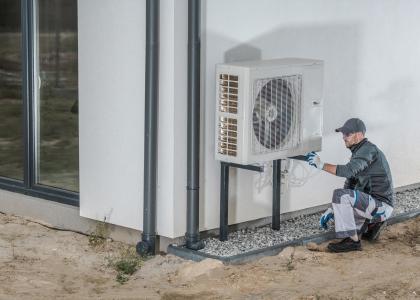Efficiency has enormous potential to reduce greenhouse gas emissions. Provisions to tap this resource must be central to climate policy to get the needed reductions, and to get them as quickly and cheaply as possible. In recent decades, efficiency has done more to meet growing demand for services delivered by energy than all new supply solutions combined (see Figure 1), and has done so without producing any greenhouse gas emissions.
Yet we have used only a fraction of efficiency's potential. Figure 2 shows many of the technologies available to reduce greenhouse gas emissions, plotting abatement potential against full-life costs. It displays in particular the large contribution that could be made by efficiency technologies whose lifetime energy savings in dollars exceed their upfront costs.
Energy efficiency saves money, not only by reducing consumption, but also by changing the demand-supply balance, thereby bringing down energy prices. In fact, in the context of climate policy, efficiency may serve to offset the higher energy prices resulting from a cap-and-trade system.
Thus taking advantage of efficiency opportunities can go a long way towards meeting greenhouse gas emissions reduction targets and can do so at net savings to the economy. Many efficiency resources can be tapped quickly, another crucial feature of their contribution to addressing climate change. For all these reasons, efficiency should be the centerpiece of U.S. climate policy.
PRINCIPLES FOR EFFECTIVELY INCLUDING ENERGY EFFICIENCY IN CLIMATE POLICY
The inclusion of specific energy efficiency policies in climate legislation is essential to realizing efficiency's potential to reduce emissions. Utility energy efficiency targets, appliance and vehicle standards, building codes, and land use planning inducements should all be among the basic elements of any federal climate bill today.
A cap-and-trade program alone cannot substitute for these policies. Given the low price elasticity of the demand for energy, price increases resulting from a carbon cap will have very little effect on energy consumption. This inelasticity follows from persistent market barriers to efficiency, notably the principal-agent problem (wherein homebuilders, landlords, and other agents fail to make efficiency investments on behalf of the ultimate energy bill payers) and information costs (wherein efficiency-purchase decisions are too small to support the economic analysis needed to make the optimal choice).
Furthermore, covered sources in cap-and-trade programs as proposed in current legislation are energy producers, who have little ability or incentive to promote end-use energy efficiency directly. For example, fuel producers and importers, who are the covered sources in the transportation sector, do not influence the fuel economy of vehicles or how much motorists drive.
Nonetheless, a cap-and-trade program can be designed to yield substantial efficiency improvements, through strategic allocation of carbon allowances or auction revenues. In general terms, this means investing in targeted programs to overcome market barriers to efficiency, or using allowances to incentivize state or municipal adoption of codes and standards. If chosen properly, these allocations would lead to cost-effective emissions reductions, in addition to delivering the broader economic benefits discussed above.
